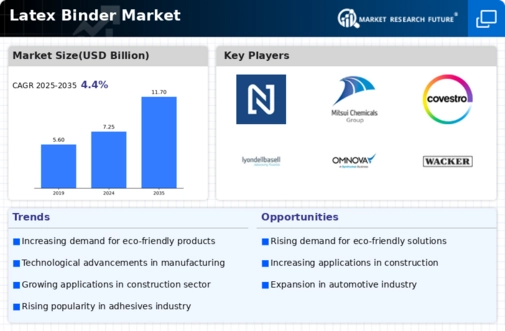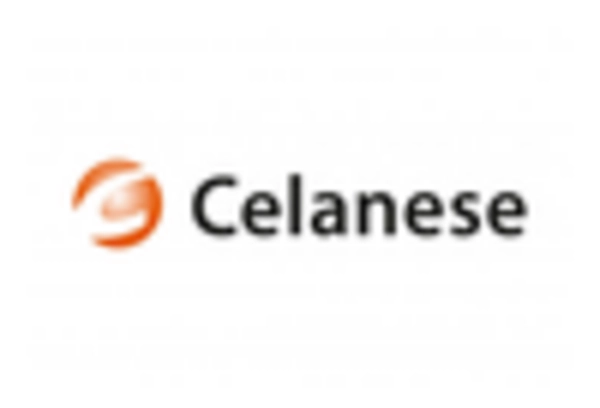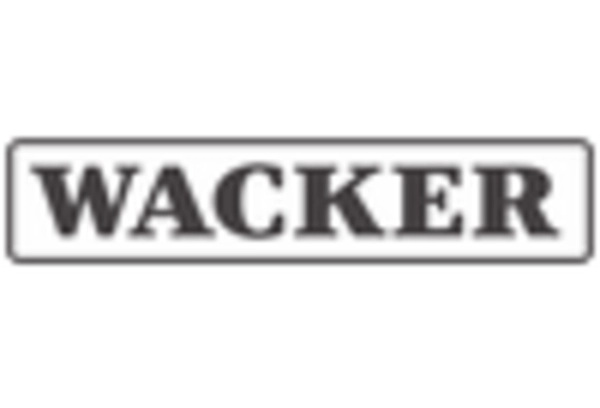Growth in the Automotive Sector
The automotive sector plays a crucial role in driving the Latex Binder Market. With the increasing production of vehicles, there is a rising demand for adhesives and sealants that utilize latex binders. These materials are essential for ensuring structural integrity and enhancing the performance of automotive components. Recent statistics indicate that the automotive industry is set to expand at a rate of 4% per year, which is likely to bolster the demand for latex binders. Furthermore, the shift towards electric vehicles may introduce new applications for latex binders, as manufacturers seek lightweight and efficient materials to improve energy efficiency.
Innovations in Product Formulation
Innovations in product formulation significantly impact the Latex Binder Market. Manufacturers are investing in research and development to create advanced latex binders that offer superior performance characteristics, such as enhanced adhesion, flexibility, and resistance to environmental factors. These innovations cater to diverse applications, including textiles, paper, and coatings. The introduction of eco-friendly formulations is also gaining traction, aligning with sustainability trends. Market data suggests that the demand for innovative latex binders is expected to increase by 7% annually, as industries seek to improve product quality and meet regulatory standards. This trend indicates a dynamic shift in the market landscape.
Rising Demand in Construction Sector
The Latex Binder Market experiences a notable surge in demand driven by the construction sector. As urbanization accelerates, the need for durable and high-performance materials becomes paramount. Latex binders are increasingly utilized in adhesives, paints, and coatings, enhancing the longevity and aesthetic appeal of construction projects. According to recent data, the construction industry is projected to grow at a compound annual growth rate of approximately 5.5% over the next five years, which directly influences the latex binder market. This growth is likely to be fueled by infrastructure development and renovation activities, indicating a robust future for latex binders in construction applications.
Expansion of the Paints and Coatings Market
The expansion of the paints and coatings market significantly influences the Latex Binder Market. Latex binders are integral to the formulation of water-based paints, which are increasingly preferred due to their low volatile organic compound emissions and environmental benefits. The Latex Binder Market is projected to grow at a rate of 6% annually, driven by rising consumer preferences for sustainable and high-quality products. This growth presents a substantial opportunity for latex binder manufacturers to innovate and expand their product offerings, thereby enhancing their market presence. The increasing focus on aesthetics and durability in coatings further underscores the importance of latex binders.
Regulatory Support for Eco-Friendly Products
Regulatory support for eco-friendly products is a significant driver for the Latex Binder Market. Governments worldwide are implementing stringent regulations aimed at reducing environmental impact, which encourages the adoption of sustainable materials. Latex binders, particularly those formulated with low VOCs, align with these regulatory frameworks, making them increasingly attractive to manufacturers across various sectors. Market analysis indicates that the demand for eco-friendly latex binders is expected to rise by 8% over the next few years, as companies strive to comply with environmental standards and consumer preferences. This regulatory landscape not only fosters innovation but also enhances the competitive edge of latex binder producers.


















Leave a Comment